33 Low Stress Jobs To Make More Money
Are you looking for the best low stress jobs? If you currently dread going to work and are looking for something new, here’s where to start.
If your current job is too stressful, you may be thinking about switching to something less intense. Lots of jobs pay well without making you feel anxious or burned out all the time.
Whether you’re making online content, helping people get fit as a personal trainer, or organizing medical records, there are many options for a job that helps you stay calm and relaxed.
Recommended reading: 40 Best Jobs Where You Work Alone
Best Low Stress Jobs
There are many low stress jobs listed below. If you want to skip the list, here are some jobs that you may want to start learning more about first:
Below are the best low stress jobs.
Note: While these jobs are low stress for some, they may not be for all. There may be a certain aspect of it that may make it low stress for you, such as being able to work alone, being able to work from home, having a flexible schedule, or doing something that you enjoy. But, nearly all jobs have some sort of stress that is a part of the job, so that is something to keep in mind. And, that doesn’t mean that these jobs are easy. Many of the jobs below are still quite difficult, requiring schooling (even getting your doctorate degree!) and hard work.
1. Blogger
If you enjoy writing and sharing ideas, becoming a blogger might be the perfect low stress job for you.
As a blogger, you have the freedom to create content on topics that interest you. Whether it’s personal finance, cooking, travel, tech, or any hobby, your blog is a space to express yourself.
I started my blog, Making Sense of Cents, in 2011 without much planning. I just wanted to talk about my own experiences with money. Surprisingly, since then, I’ve made over $5,000,000 from it. And now, blogging is my main job!
I really enjoy being able to blog full-time, and it’s much less stressful than the previous day job I had. But, it is still running my own business, so there are other stresses that come along with that, of course.
But, there are many positives as well! I can work alone, I get to make my own schedule, I am my own boss, I get to do the work that I choose to do, and I can work from home. I have an amazing work-life balance, and I wouldn’t trade this job for anything else.
So, what’s a blog? Well, it’s like what you’re reading now – it’s writing on a website. You can write a blog about something you really like, something you know a lot about, or even something you want to learn more about. People like to read blogs because they get to follow along with someone’s real experiences and journeys!
You can learn how to start a blog with my free How To Start a Blog Course (sign up by clicking here).
2. Sell printables
Selling digital printables online is a great way to work from home with less stress and make money.
Creating printables can be a less stressful job because you only need to make one digital file for each product, and then you can sell it many times. It’s also not expensive to start because all you need is a laptop or computer and an internet connection.
Plus, you can do all of this from home and on your own time.
Printables are things you can get on the internet and print at home. They could be games for a bridal shower, lists for groceries, planners for managing money, invites for events, quotes you can hang on your wall, or designs you can use for crafting.
I recommend signing up for Free Training: How To Earn Money Selling Printables. This free workshop will give you ideas on what types of printables you can sell, how to get started, the costs of starting a printables business, and how to make money.
Do you want to make money selling printables online? This free training will give you great ideas on what you can sell, how to get started, the costs, and how to make sales.
3. Bookkeeper
Bookkeepers handle money matters for businesses, and they write down sales, keep track of expenses, and create financial reports.
This job allows you to work independently, earning a typical salary of $40,000 or more each year. You’ll mainly work with numbers instead of interacting with people.
Many bookkeepers like their jobs because they work regular hours and don’t have as much pressure as some other jobs.
You don’t need a college degree to start as a bookkeeper either. This is something that you can learn to get started, as there are no education requirements.
You can join the free workshop that focuses on finding virtual bookkeeping jobs and how to begin your own freelance bookkeeping business by signing up for free here.
Recommended reading: How To Find Online Bookkeeping Jobs

10
This free training will teach you what you need to know to become a virtual bookkeeper and make money from home.
4. Proofreader
If you already enjoy reading articles or books and spotting errors, then you may find this job interesting.
A proofreader’s main task is to read content and look for mistakes in spelling, grammar, and punctuation. They’re the last line of defense, ensuring that everything reads perfectly before it goes out into the world. Many proofreaders enjoy the flexibility this job has, as they can often set their own hours and work from where they feel most comfortable.
Many writers, website owners, and students hire proofreaders to improve their work. There’s a big demand for proofreaders, and you can find jobs on different sites.
Even the best writers can make errors in grammar, punctuation, and spelling. That’s why hiring a proofreader can be extremely helpful for almost everyone.
In fact, I have a proofreader for my blog. Even though I write all day long, I know that it is very important to have a proofreader go through everything that I write.
If you want to become a proofreader, I recommend joining this free 76-minute workshop focused on proofreading. In this workshop, you’ll learn how to begin your own freelance proofreading business.
Recommended reading: 20 Best Online Proofreading Jobs For Beginners (Earn $40,000+ A Year).

10
This free 76-minute workshop answers all of the most common questions about how to become a proofreader, and even talks about the 5 signs that proofreading could be a perfect fit for you.
5. Transcriptionist
Transcriptionists listen to recordings and type out what they hear.
Becoming a transcriptionist is a low stress job if you’re looking for flexibility in terms of work schedules and the comfort of working from your own space.
Online transcriptionists typically earn between $15 to $30 per hour on average, with new transcribers usually starting at the lower end of that range.
A helpful free training to take is Free Workshop: Is a Career in Transcription Right for You? You’ll learn how to get started as a transcriptionist, how you can find transcription work, and more.
Recommended reading: 18 Best Online Transcription Jobs For Beginners To Make $2,000 Monthly

10
In this free training, you will learn what transcription is, why it’s a highly in-demand skill, who hires transcriptionists, how to become a transcriptionist, and more.
6. Software developer
A software developer is a person who designs, creates, tests, and keeps up software applications, systems, and programs. They’re good at programming languages and frameworks, using their skills to make solutions that meet specific needs or solve problems.
Software developers work in different fields like technology, finance, healthcare, and entertainment. They work with other team members like designers, engineers, and project managers to finish software projects well and meet the needs of users.
I know many software developers who enjoy what they do. While it is a hard job, many of them are able to work from home, travel whenever they want, and they tend to enjoy solving complex technical issues.
Other less stressful jobs in a related field include becoming a computer systems analyst, software architect, computer hardware engineer, and web developer. For these jobs, you may need a bachelor’s degree in software engineering, computer science, or a related field.
7. Massage therapist
If you’re looking for a stress-free job that lets you help others, think about being a massage therapist. Massage therapists use their hands to ease pain, help people relax, and help people feel less stressed.
Massage therapy might be a little less stressful for you because the atmosphere at work is usually calm (after all, that’s why people are going there – to relax!), and you don’t bring work home with you (so, no late night phone calls from clients!).
Massage therapists usually work in places like spas, wellness centers, or chiropractic clinics. Some may also have their own private businesses or have mobile services, which lets them have a more flexible schedule and be their own boss.
To become a massage therapist, you will need to go to school for massage therapy and pass a state exam. This typically takes around 6 months to 2 years to complete (it depends on the state you live in).
8. Personal trainer
Personal trainers help people with their fitness and being more healthy, which can mean creating workout plans, motivating them to work out, or showing the right way to lift weights.
Personal trainers work in a gym, hospital, or even go solo as a freelancer.
This job has some flexibility, which is something that many personal trainers like. You get to choose who you train, where you work, and when you have sessions. Plus, you’re not stuck at a desk all day, which keeps things fresh and fun.
9. Dental hygienist
Dental hygienists clean teeth, check for things like cavities or gum disease, and teach patients the best ways to brush and floss.
You can start this career with an associate’s degree, which usually takes about two years to finish. Plus, you may be able to make over $75,000 a year as a dental hygienist.
10. Medical records technician
If you’re in the job search for low stress jobs in healthcare, then becoming a medical records technician may be for you.
Medical records technicians handle health information data, and they make sure that all the records (both electronic health records and paper files), such as patient history, test results, and treatments, are accurate, accessible, and secure.
It’s low stress because, unlike some roles in medicine, you won’t be on the front lines dealing with emergencies. Your work environment is typically calm, allowing you to focus on your tasks without the pressure of patient care.
To become a medical records technician, you typically only need a high school diploma, but some employers may want to see a certificate related to the field or higher education.
11. Optometrist
An optometrist is an eye doctor who helps people see better. They check your eyes, find out if you need glasses, and help keep your eyes healthy.
You may like being an eye doctor because:
- You usually work regular hours. People don’t typically have optometrist emergencies.
- The pay is great.
- It’s usually a relatively calm job.
Plus, according to the Bureau of Labor Statistics, the median salary for optometrists is over $125,000 a year, and there is expected to be a 9% job growth outlook over the next decade.
12. Physicist
Physicists study the laws and principles that govern the universe, like gravity and motion, and how they apply to everyday life.
Most physicists work in research and development. Some work in offices, while others spend time in laboratories. There are also those who teach at universities.
The job comes with a reasonable stress level, as physicists frequently engage in deep thinking rather than dealing with tight deadlines or high-stress situations, and they typically conduct research. This can make for a fulfilling and low-pressure work environment if you enjoy physics.
To be a physicist, you will likely need a Ph.D. That means a lot of school, but it’s worth it if you love science and discovery.
13. Statistician
Being a statistician might be a perfect choice for your career if you love numbers and data.
Statisticians analyze data and identify patterns, such as by taking a bunch of numbers and turning them into useful information that companies can use to make decisions. Statisticians also might collect data from surveys and experiments.
Statisticians usually have pretty regular hours and it’s normally a quiet place to work, so you can focus just on your tasks without a bunch of noise. Plus, it’s not a job that is typically rushed, so you can take your time.
14. Mathematician
If you love numbers and problems that make you think, a related field to the above may be becoming a mathematician.
Mathematicians use mathematics to unravel patterns and address significant questions.
Mathematicians are needed in many different fields like academia, government, finance, and technology.
In academia, they work as professors and researchers, studying both theoretical and practical math ideas. Government agencies like NASA and the NSA hire mathematicians for jobs like exploring space and analyzing statistics. Financial companies hire mathematicians to make algorithms for things like evaluating risk, pricing items, and creating trading strategies. Also, big tech companies like Google and Microsoft use mathematicians to develop algorithms and analyze data.
15. Librarian
Becoming a librarian is a great job for someone who likes quiet places and books.
Being a librarian is not just about checking out books. It’s a role that’s all about helping people find information and enjoy reading.
Your main job as a librarian would be to help people find the books or online resources they need. You also get to put together fun programs, like story time for kids or book clubs. Keeping the library in tip-top shape is part of your work too, like putting books back on the shelves, managing schedules for employees and volunteers, and making sure everything is where it belongs.
Libraries are usually calm and quiet, which can make it stress-free for you. This makes your workplace quite relaxing, which is great if loud and busy spots make you feel stressed. Plus, you get to have a regular schedule.
Most librarian jobs need a bachelor’s degree at the minimum and sometimes, you will most likely need a master’s degree in library science (MLS) from an accredited program.
Librarians work in many places, such as public libraries, schools, law firms, universities, and more.
16. Orthodontist
One of the best high-paying jobs for people who don’t like stress is becoming an orthodontist.
An orthodontist is a specialized dentist who focuses on fixing teeth and jaw alignment problems. They help patients get straighter smiles and better oral health using treatments like braces, clear aligners, and retainers.
Orthodontists get extra training after dental school to become experts in diagnosing and treating issues like misaligned bites and other dental problems.
By carefully checking each patient, orthodontists make personalized plans to straighten teeth properly, leading to better-looking smiles and improved function of the teeth and jaws.
Being an orthodontist can be pretty low stress since they usually have a set schedule, seeing patients for regular appointments instead of dealing with sudden dental emergencies.
17. Groundskeeper/gardener
Becoming a groundskeeper or a gardener could be a great fit for you if you like being outside and want a stress-free job. You get to work with plants and make outdoor spaces look beautiful. This job is perfect if you’re looking for something that lets you enjoy fresh air and doesn’t have you sitting at a desk all day.
Here are some things that a groundskeeper or gardener may do:
- Take care of plants and grass by watering, weeding, and trimming.
- Make sure gardens look neat and are healthy.
- Sometimes work with tools and machines, like lawn mowers and trimmers.
- Shovel snow or take care of indoor plants.
This is one of the best low stress jobs because it is usually quiet, which makes it great for people who get overwhelmed by noisy places.
Recommended reading: 15 Outdoor Jobs For People Who Love Being Outside
18. Audiologist
Audiologists help people with their hearing, and this includes testing hearing, picking out hearing aids, and teaching people how to use them.
This is typically a low stress career choice because you get to work in an office and do similar tasks each day. You are not usually rushing around, instead you have a lot of calm one-on-one time with patients.
Audiologists work in different places like hospitals, clinics, private practices, schools, and research institutions.
19. Pet sitter
Becoming a pet sitter is a great job if you like animals and enjoy caring for them. This is a job that doesn’t typically have a lot of stress because it is not fast-paced. Plus, if you like pets, then you probably enjoy being around them, which can make the job fun.
A pet sitter’s main job is to look after pets while their owners are away. This might mean feeding them, giving them water, and playing with them. It’s important to make sure the pet feels happy and safe when their owner isn’t home.
You might have pets come to your home, or you can go to their owners’ place (this is something that is agreed upon beforehand). Dog walkers typically earn around $20 for every hour they spend walking a dog. Taking care of someone’s pet overnight can earn a person around $25 to $100 or even more each day.
I have used many pet sitters over the years for my dogs, and they all seemed to love what they do. Plus, my mother-in-law is a pet sitter as well, and she enjoys her time with the dogs that she takes care of.
20. Stock photo photographer
Stock photo photographers take photos of things like people, businesses, animals, and more, and sell them for other people to use.
Stock image sites are some of the most popular platforms for photographers to sell their pictures. These websites allow customers to purchase images for purposes such as websites, TV shows, books, and social media accounts. You can take a look at some of the stock photos I’ve purchased within this blog post as examples.
Stock photo photographers typically work by themselves, and this job can be done without much interaction with others. Most of the tasks involve using a camera and then uploading photos to a website.
As a stock picture photographer, you get to set your own schedule. This means you can choose when and where you work.
One great thing about stock photo sites is that they can be a great form of passive income. You can take pictures, upload them, and continue to earn money from those photos for months or even years into the future. Since everything is online and mostly automated, there’s no need to talk with anyone directly.
Recommended reading: 18 Ways You Can Get Paid To Take Pictures
21. Freelance writer
Freelance writers create content for clients, including blog posts, advertising materials, and more.
It’s common for freelance writers to work independently, receiving topics from clients and submitting their completed work. Occasionally, they may receive feedback, such as suggestions for improvement, but this is usually the extent of human interaction they’ll have.
This is one of the best low stress jobs from home where you work alone.
I have been a freelance writer for many years and I enjoy this job a lot. I get to work from home, make my own hours, work alone, and choose the topics that I write about.
Recommended reading: 14 Places To Find Freelance Writing Jobs As A Beginner
22. Graphic designer
A graphic designer is someone who creates designs for individuals and businesses.
They create things such as images, printables, planners, T-shirt designs, calendars, business cards, social media graphics, stickers, logos, and more.
Graphic designers tend to have the freedom to set their own schedules, especially if they work as a freelancer. This job allows you to work at your own pace, and most of the time, you don’t have to deal with rush hour traffic or crowds since a lot of graphic designers can work from home.
23. Hairstylist
We’ve all been to a hairstylist, so I don’t think I need to describe this job too, too much. Hairstylists cut, style, and take care of hair.
Hair styling is lower stress because you work with clients in a relaxed setting. Also, you don’t have to sit at a desk all day – you move around and talk with people.
Plus, you can set up your day the way you like it. If you want, you can take breaks between clients. This means you won’t feel rushed and can enjoy your work more.
24. Social media manager
Social media managers engage with people online and share news, pictures, and videos on behalf of a company.
You may find this to be a low stress job because you mostly type on a computer or phone as a social media manager. So, if talking in front of people makes you nervous, this could be the perfect job. Plus, you can often work from home.
25. Virtual assistant
One of my first side gigs was working as a virtual assistant, and it was both enjoyable and flexible for earning income.
While you have a boss as a VA, many of the tasks you handle will require you to take the lead and complete them independently, usually from your own home.
A virtual assistant is someone who assists people with office tasks remotely, whether from home or while traveling. This could involve tasks such as responding to emails, scheduling appointments, and managing social media accounts.
Recommended reading: Best Ways To Find Virtual Assistant Jobs
26. Litter cleanup worker
This is one of the least stressful jobs.
If you have a business, it’s important to keep it clean and neat. No one likes seeing trash scattered about when they’re shopping, correct?
That’s why some business owners pay someone to tidy up before their business opens. A clean space makes the place look inviting and pleasant for customers.
This low stress job without a degree can be started all by yourself, and you can earn around $30 to $50 for every hour you work. It’s quite straightforward too. All you’ll need is a broom, a dustpan, and some tools to help you pick up litter more easily.
People like this job because they can work alone and it’s easy to clean an area up.
Recommended reading: How I Started A $650,000 Per Year Litter Cleanup Business
27. Economist
Economists examine how goods and services are made, shared, and used within an economy. They use different tools, like math and stats, to grasp and predict economic patterns and actions.
Economists might work for the government, giving advice to policymakers on things like money policies and taxes. They also help businesses by explaining market trends, so they can make good decisions about prices, production, and investments.
A somewhat related field to this would be becoming an economics professor.
28. Astronomer
Astronomers study objects and events in space beyond Earth’s atmosphere, like stars, planets, galaxies, and cosmic happenings such as black holes and supernovas.
They use a mix of observations, data analysis, and theoretical models to learn about the origins, changes, and behaviors of these objects. Astronomers usually use advanced telescopes, both on the ground and in space, to observe and gather data from far-off parts of the universe.
They also work with physicists, mathematicians, and engineers to create new technologies and tools for exploring space. Through their work, astronomers help us understand big questions about the universe, like how old it is, what it’s made of, and what will happen to it in the future.
Unlike many jobs, being an astronomer means regular hours with few surprises. Plus, the quiet of a lab or observatory is perfect for staying focused and calm.
29. Actuary
Actuaries assess and handle financial risks by using math and stats to analyze data and forecast future events.
They mainly work for insurance companies, pension funds, and financial consulting firms. Actuaries examine how likely events like death, illness, accidents, and natural disasters are to happen, and what impact they could have on insurance policies and pension plans.
Based on their analysis, they help create insurance policies, decide on premiums, and suggest investment plans to make sure these financial products stay stable and have enough coverage for customers.
If you enjoy numbers and are looking for a job that’s pretty easy on stress, becoming an actuary could be a smart move. Actuaries help businesses look into the future and protect against loss.
30. Radiologist
If you’re interested in a career in the medical field that is both high-paying and considered to have lower stress, you might want to think about becoming a radiologist.
Radiologists specialize in diagnosing and treating diseases and injuries using medical imaging techniques like X-rays, CT scans, MRI scans, ultrasound, and nuclear medicine. They analyze images to find any abnormalities and give detailed reports to other doctors, helping with patient diagnosis and treatment plans.
Radiologists work closely with other healthcare professionals to make sure they understand the imaging results and can provide the best care for patients.
31. Data entry clerk
Data entry is one of the easiest low stress jobs without a degree needed.
Data entry clerks input, edit, and verify data in databases or spreadsheets. They enter details like numbers and names into computers to maintain organization and records.
This job can often be done remotely and independently, with little supervision or interaction with customers. For some people, this is key to having a stress-free job, and I completely get it – this is what I want as well!
Data entry positions generally pay around $15 to $20 per hour.
Recommended reading: 15 Places To Find Data Entry Jobs From Home
32. Yoga instructor
If you love helping others relax and stay fit, being a yoga instructor could be the perfect job for you if you want to find fun low stress jobs.
Yoga instructors lead classes and sessions in practicing yoga, a holistic discipline involving physical postures, breathing exercises, relaxation techniques, and meditation.
They help students through different yoga poses, focusing on correct alignment, breath control, and mindfulness. Yoga instructors create a welcoming environment where students of all levels can explore and improve their practice.
33. Dietitian
A dietitian talks to clients about their eating habits and helps figure out the best way to eat healthy.
Being a dietitian is usually not too stressful. You get to chat with people one-on-one or in small groups. You don’t have to rush around or handle dangerous equipment.
They can work in places such as hospitals, clinics, schools, community health centers, and food service establishments.
Frequently Asked Questions
Below are answers to common questions about how to find low stress jobs.
What’s the least stressful job?
The least stressful job will depend on your personality, as everyone is different. Some less stressful jobs include writing online, gardening, selling printables, and data entry. For me, I really like blogging, and I think it’s a great stress-free career that you can do at home.
How do I find a peaceful job?
If you want a peaceful job that doesn’t have a lot of stress, then I recommend first thinking about what you would find peaceful in a career, such as by looking for jobs with fewer deadlines and less contact with lots of people. Jobs where you can set your own pace, like a blogger or a freelancer, tend to have a peaceful workday. Think about what makes you feel calm, and then look for jobs that match that feeling.
What job is the easiest and pays the most?
Some jobs that are pretty easygoing and also pay well include orthodontist and optometrist. These jobs usually have regular hours and don’t need you to rush around. Plus, they pay more than enough to help you save for those things you love to buy.
What types of work-from-home jobs are low stress?
Working from home can be really laid back when you’re doing something like freelance writing, blogging, transcribing, or graphic design. You can pick the jobs you want and work when it suits you best.
What are the best low stress jobs for introverts?
If you’re quiet or introverted, then you might be interested in jobs where you can work solo or with just a few people. Jobs like a bookkeeper, transcriptionist, or data entry let you focus on your work without having to talk to many people.
What are high-stress jobs?
Some of the most stressful jobs include being a nurse, police officer, surgeon, social worker, anesthesiologist, firefighter, lawyer, airline pilot, paramedic, and in the military.
Best Low Stress Jobs – Summary
I hope you enjoyed this article on the best low stress jobs.
Nowadays, people are realizing how important it is to balance work and personal life and to take care of their mental health while lessening their anxiety about work. Some occupations, like software development and data entry, have this balance and a sense of calm.
Professionals such as dental hygienists, librarians, and dietitians also enjoy low stress roles with predictable schedules.
You don’t have to give up peace of mind to have a career. By thinking about what you’re good at and what you enjoy, you can find jobs that meet your goals while keeping stress levels low.
For me, I personally love having a career that has low stress. While it is still hard, I love that I can work from home, choose the work I do, and have a flexible schedule – all things that help me be less anxious and happier about the work that I do.
What do you think is the best low stress job?
Recommended reading:
The post 33 Low Stress Jobs To Make More Money appeared first on Making Sense Of Cents.
Are you looking for the best low stress jobs? If you currently dread going to work and are looking for something new, here’s where to start. If your current job is too stressful, you may be thinking about switching to something less intense. Lots of jobs pay well without making you feel anxious or burned...
The post 33 Low Stress Jobs To Make More Money appeared first on Making Sense Of Cents.
Mon, 01 Apr 2024 10:33:00 +00002024-04-01T10:33:00.000Z
 On Tuesday, April 30, 2024, Changpeng Zhao (CZ), formerly the CEO of Binance, was sentenced in a Seattle courtroom for his compliance failures at the cryptocurrency exchange. The sentencing was first covered by Nikhilesh De and Danny Nelson of Coindesk, who reported directly from the courthouse. Per Nikhilesh De’s X thread, the proceedings began with […]
On Tuesday, April 30, 2024, Changpeng Zhao (CZ), formerly the CEO of Binance, was sentenced in a Seattle courtroom for his compliance failures at the cryptocurrency exchange. The sentencing was first covered by Nikhilesh De and Danny Nelson of Coindesk, who reported directly from the courthouse. Per Nikhilesh De’s X thread, the proceedings began with […]
 Anza, a dev collective behind Solana, recommended the adoption of Agave v1.18.12 into the blockchain’s devnet and testnet. This new version of the mentioned client ships with a central scheduler that aims to reduce congestion by increasing fee collection and reducing conflicting transactions. Anza is calling for increased testing on this functionality. Anza Calls for […]
Anza, a dev collective behind Solana, recommended the adoption of Agave v1.18.12 into the blockchain’s devnet and testnet. This new version of the mentioned client ships with a central scheduler that aims to reduce congestion by increasing fee collection and reducing conflicting transactions. Anza is calling for increased testing on this functionality. Anza Calls for […] After the Samourai Wallet indictment, the cryptocurrency community discovered that the Bitcoin blockchain analysis platform OXT is no longer operational, as it was acquired by the Samourai team in December 2017. On April 25, Laurentmt, a co-founder of OXT and bitcoin advocate, revealed the closure on the social media site X with the statement, “RIP […]
After the Samourai Wallet indictment, the cryptocurrency community discovered that the Bitcoin blockchain analysis platform OXT is no longer operational, as it was acquired by the Samourai team in December 2017. On April 25, Laurentmt, a co-founder of OXT and bitcoin advocate, revealed the closure on the social media site X with the statement, “RIP […]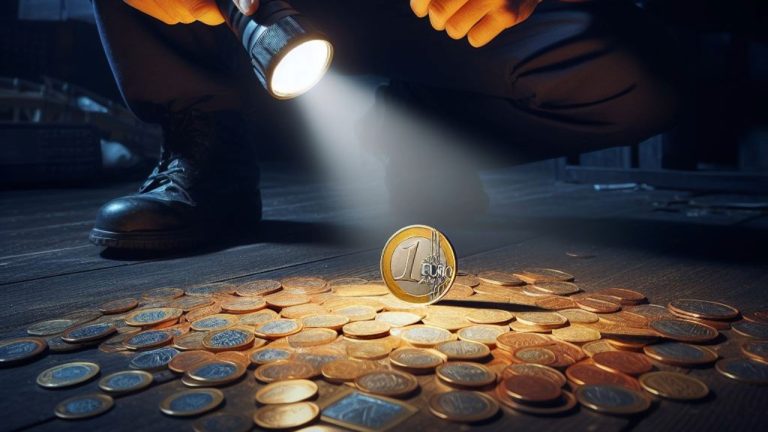 Joachim Nagel, President of the Deutsche Bundesbank, praised the privacy traits a hypothetical upcoming digital euro would possess. During a speech, Nagel specified that the Eurosystem would have “no interest” in monitoring the payments and expenses of digital euro users and would not be able to identify them based on their payments. Deutsche Bundesbank President […]
Joachim Nagel, President of the Deutsche Bundesbank, praised the privacy traits a hypothetical upcoming digital euro would possess. During a speech, Nagel specified that the Eurosystem would have “no interest” in monitoring the payments and expenses of digital euro users and would not be able to identify them based on their payments. Deutsche Bundesbank President […]
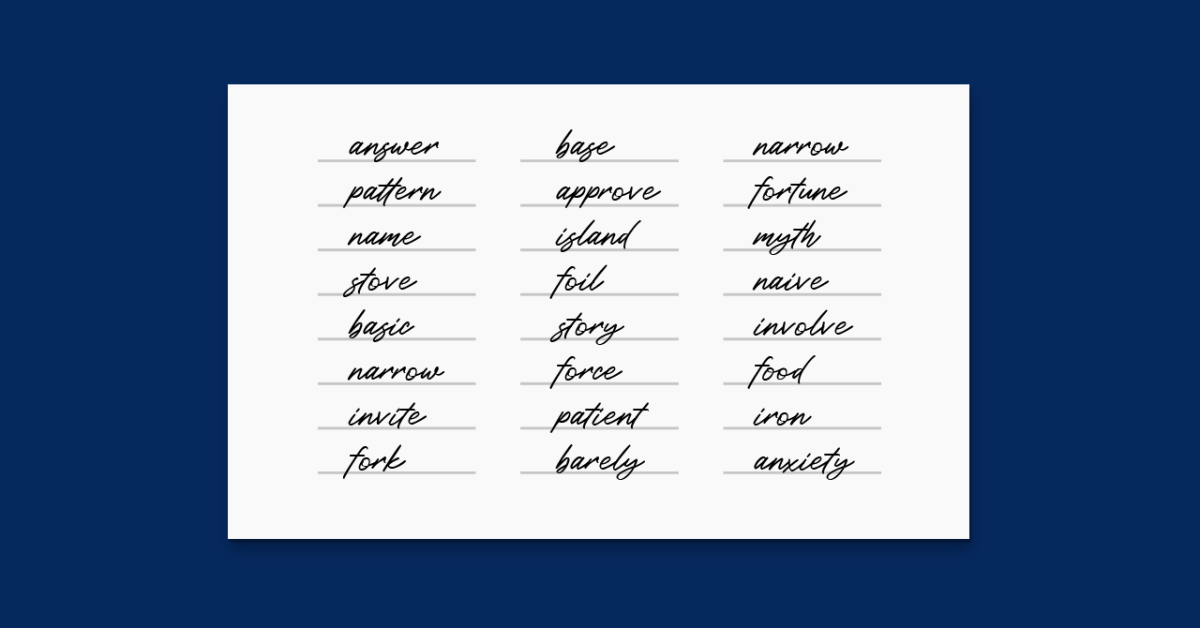



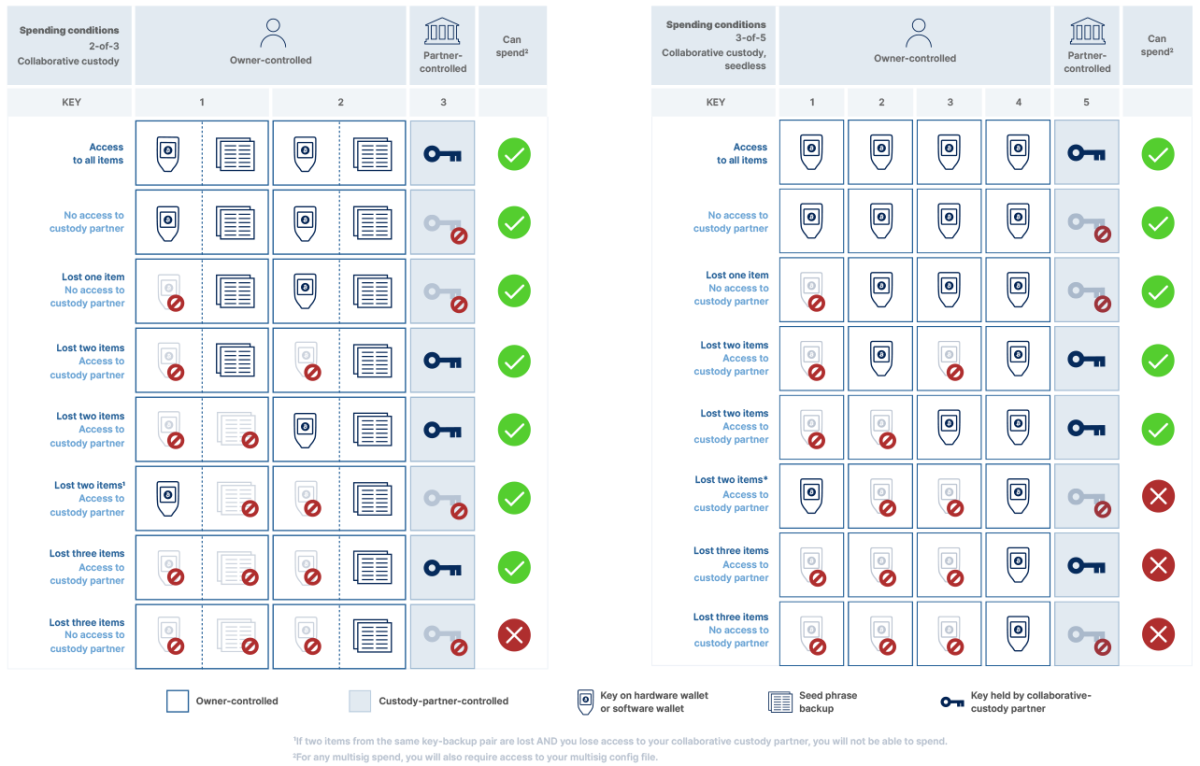

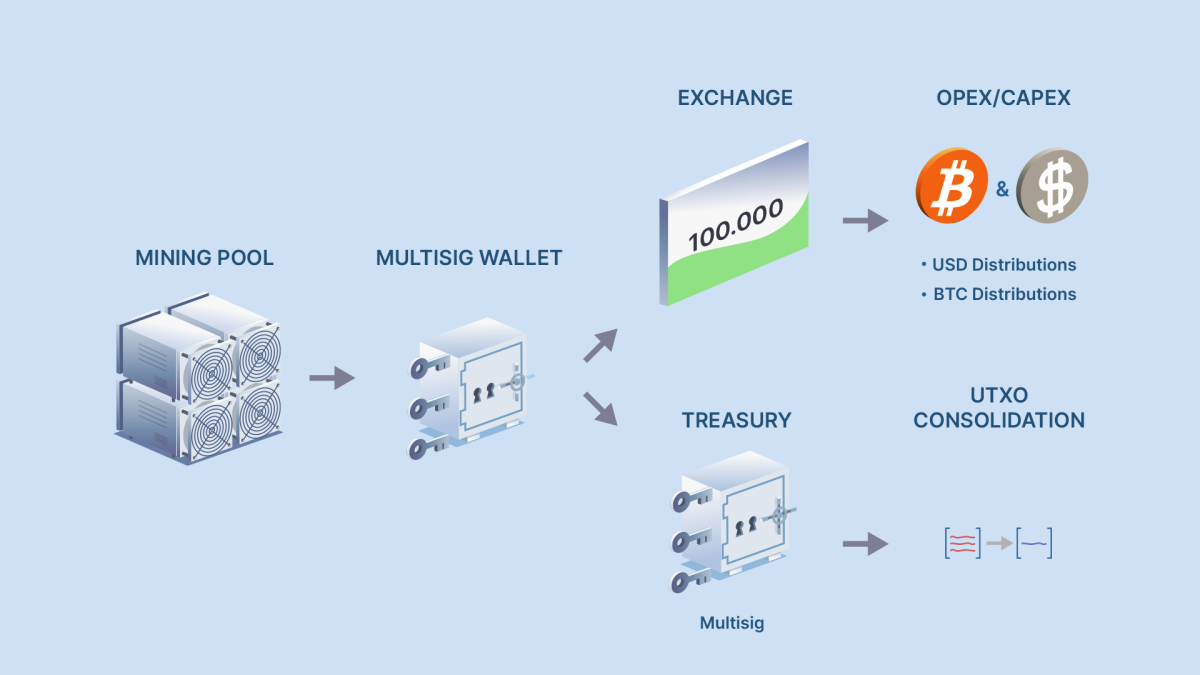

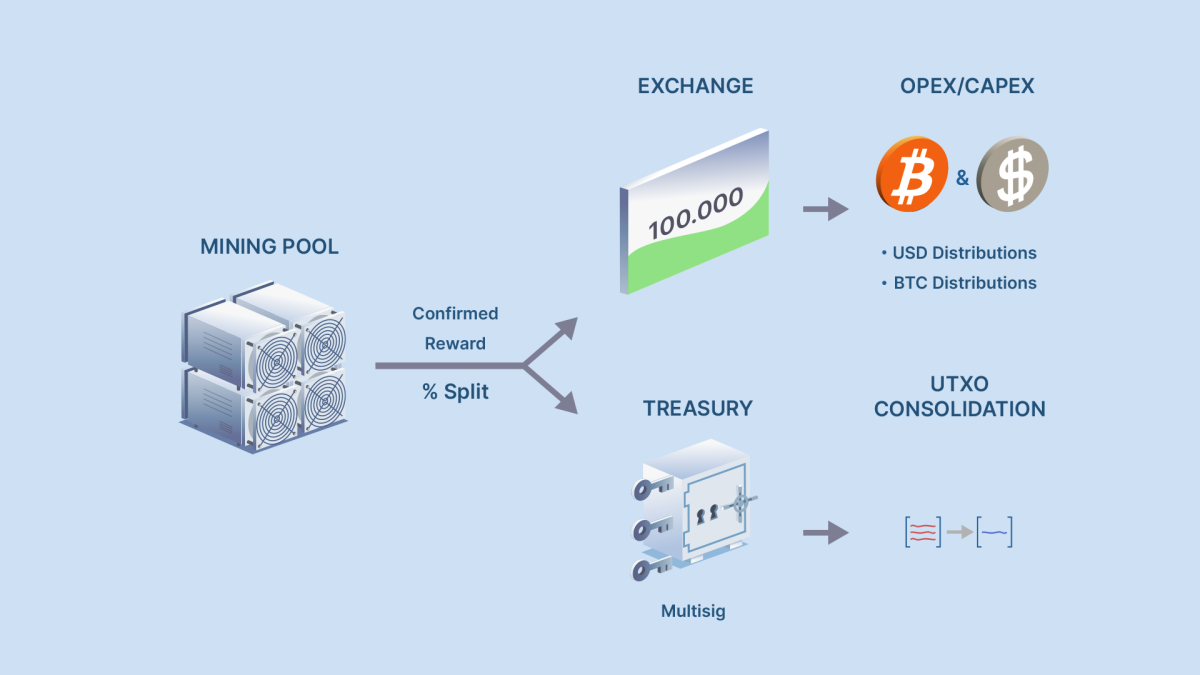

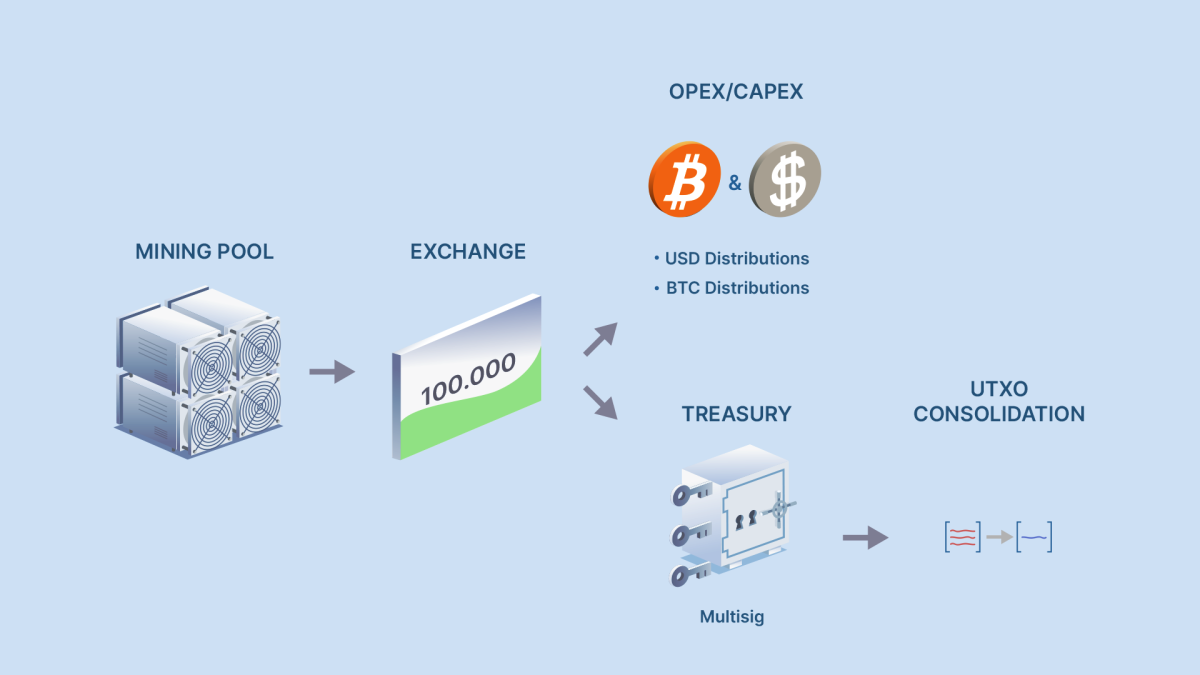


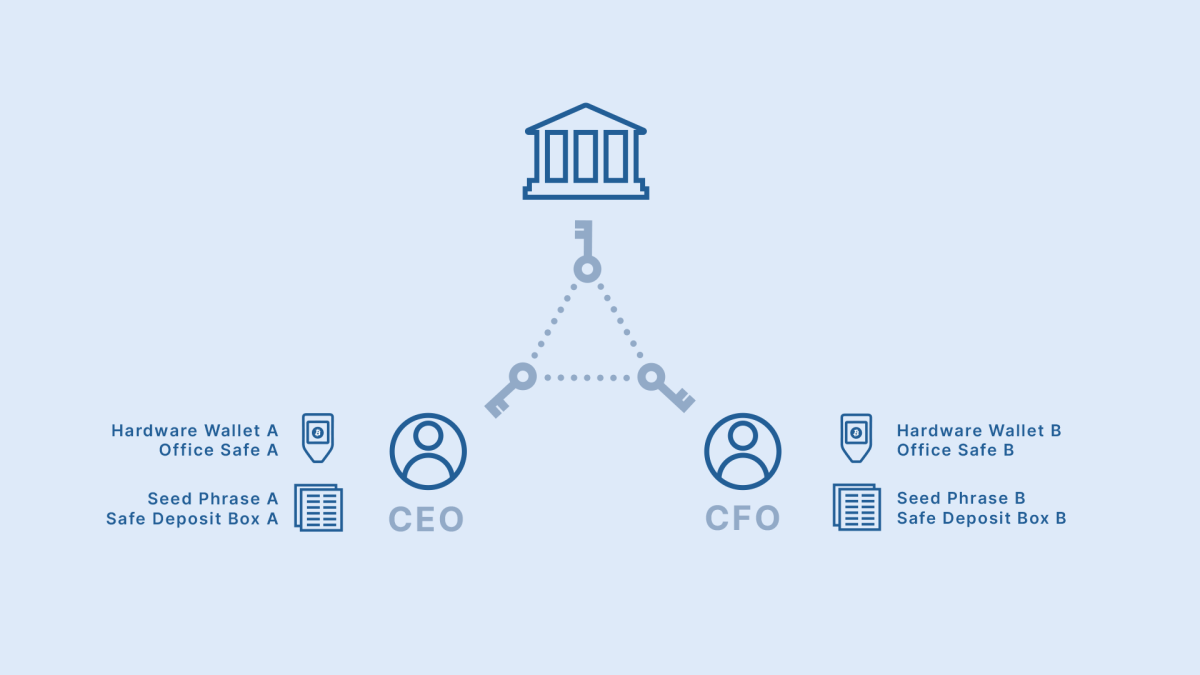
 On Monday evening, Taproot Wizards co-founder Udi Wertheimer unveiled a Bitcoin Improvement Proposal (BIP) that reintroduces the OP_CAT opcode to Bitcoin. This opcode could facilitate more streamlined and efficient decentralized file hosting systems, payment channels, and sophisticated Bitcoin smart contracts by minimizing reliance on intricate cryptographic techniques. However, Bitcoin developer Luke Dashjr has labeled the […]
On Monday evening, Taproot Wizards co-founder Udi Wertheimer unveiled a Bitcoin Improvement Proposal (BIP) that reintroduces the OP_CAT opcode to Bitcoin. This opcode could facilitate more streamlined and efficient decentralized file hosting systems, payment channels, and sophisticated Bitcoin smart contracts by minimizing reliance on intricate cryptographic techniques. However, Bitcoin developer Luke Dashjr has labeled the […]







